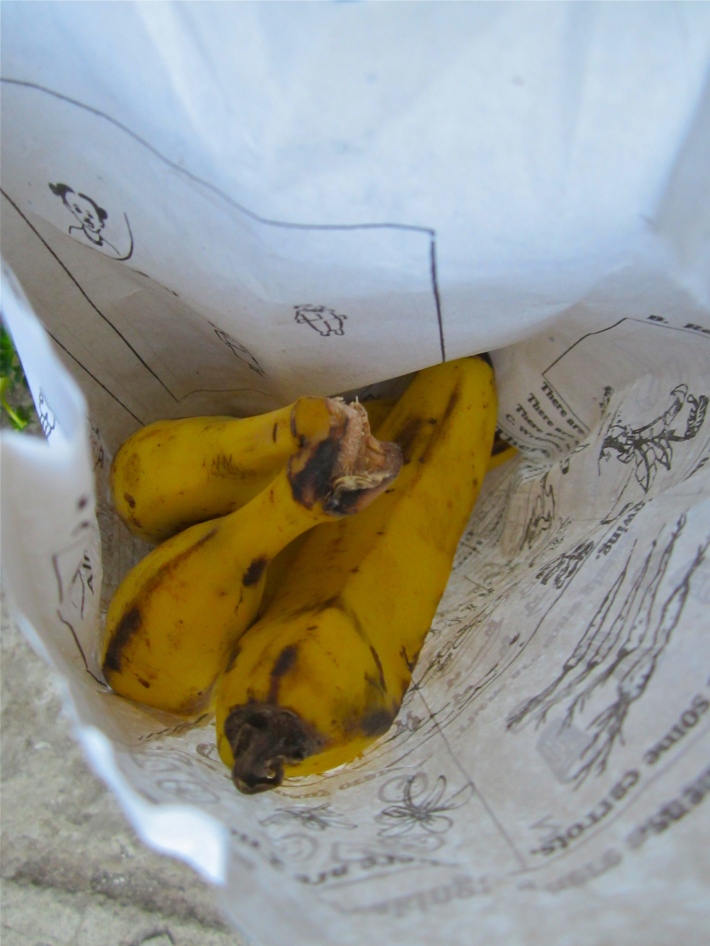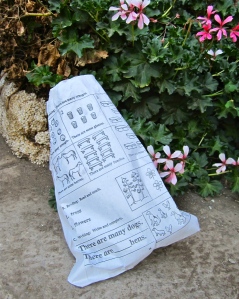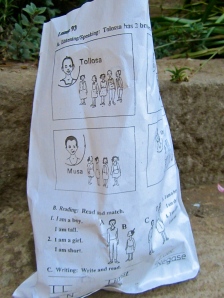The first word I learned in Amharic was “Mooz” which in English is “Banana.”
At the time I learned this word, I was teaching English to adults in an evening program at the Rondo Public Library in St. Paul, Minnesota. That evening, I had 2 students in my pre-literate class, both of whom were older and both of whom were from Ethiopia. The man spoke Amharic, and the woman spoke Afan Oromo. The man was Orthodox Christian and the woman was Muslim. We were studying food that evening, and we did so by pointing to images in a book of fruits, vegetables and meat. We said the words and wrote the words and then used them in sentences. This was a pre-lit class that typically had 1 to 3 students attend on Tuesday or Thursday evenings in the middle of winter in Minnesota.
Both the man and woman pointed to meat and agreed that “ham” and “pork” were very bad. In fact, they were forbidden. I was aware that pork was a forbidden meat for observant Muslims, but it was then and there that I first learned that Orthodox Christians from Ethiopia are also forbidden to eat the meat from a pig. They learned the word “bacon” and I told them that also came from a pig. They said that bacon was very bad. They wondered if I ate bacon. I drew a picture of a pig to confirm that we were all talking about the same animal. I asked them, as I sometimes did, “How do you say this animal in your language?”
We were about half way through our lesson when I expressed an interest in their first languages. Then, I decided to disclose that I would be moving to Ethiopia in a few months (we had opened our letter from Peace Corps and had accepted the invitation to serve in Ethiopia as English Language Teacher Trainers). Once that cat was out of the bag, the lesson dynamics completely turned around. The woman (who was previously bored and seemed sleepy) was suddenly excited and started teaching me how to say the words of fruits and vegetables in Afan Oromo. The man became equally animated and excitedly countered her words with the names of fruits and vegetables in Amharic.
Pointing at the picture of the banana, he said “Mooz!” I said, “Moose?” He repeated with authority of those who know what they are talking about: “MOOZ!” and I proceeded to draw a picture of a Moose with large antlers and told him that this funny creature lived in the northern part of Minnesota. I loved teaching pre-lit at Rhondo Library. It was a welcome break from managing volunteers who were teaching the other higher level classes. It was always fun to have older students, most of whom were brought there by their adult children (who were attending the more advanced English classes or GED courses).
What does this memory have to do with the bag-o-bananas I bought yesterday from a fruit and vegetable stand on the streets of Addis Ababa? I’ll try to explain, the best I can.
The bag was carefully crafted out of two sheets of paper printed with text from an English language textbook. The images and font are familiar to anyone who has seen government textbooks in Ethiopia. The lessons on these two pages looked like something that would be found in any third-grade classroom in Ethiopia that is lucky enough to have textbooks for students.
This hand-crafted paper bag was selected by the street vendor for the 3 bananas I purchased. I was happy that he wasn’t giving me a flimsy plastic bag. I dislike accumulating the cheap plastic bags very much and try to avoid it whenever possible. This morning, I saw some women out sweeping the streets, using the discarded plastic bags they found to hold the debris and trash they were cleaning from the surface of the busy road. I’m happy they are gathering these plastic bags and using them to clean up the city, because Addis can get really filthy…
But back to the source of the paper used for the bag in which I placed my 3 bananas. Why were they using government printed textbooks that seemed to be in great condition for bags in the first place? I know so many schools where students don’t have access to books. It seemed strange. So I took a photo of the bag when I got home and I’m sharing this story with you today.
What impressed me about this bag? 1) the tactile quality of the paper– cheap newsprint, with an appealing non-slick texture; 2) the straight-forward quality of the black ink as it sits upon this coarse newsprint; and 3) the distinct font and drawing style that grace most textbooks I’ve seen.
As a visual artist and appreciator of crafts and books, I think my admiration for this bag-o-bananas indicates only one thing: it’s high time for me to start making some art again!




I share your passion for crafts and also love it when receiving fruits or veggies wrapped in paper instead of these plastic bags which you only use once as they tear easily. But beware of the brown paper bags they use in Merkato. They used to hold cement 😦